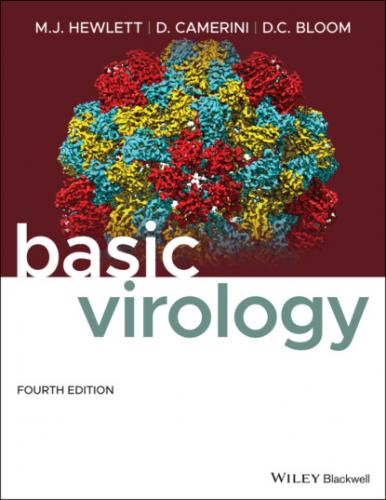A number of important human viruses are either asymptomatic or cause relatively mild symptoms of primary infection, which is followed by a stable association between virus and host that lasts as long as the latter lives. During this more or less stable association, some viruses are constantly shed, while persistent infections with others lead to loss of any detectable virus. In the latter case, various types of stress to the host can lead to viral recrudescence (reappearance of infectious virus along with mild or no symptoms) with the potential for virus spread to other individuals.
Notable persistent viruses include the human herpesviruses, human papilloma and related polyoma viruses, human retroviruses, and two completely unrelated viruses – hepatitis B and hepatitis C viruses – whose chronic infection leads to severe liver damage. The details of the replication of these viruses will be covered in later chapters in Part IV; what is important to consider now is that the persistent mode of virus–host interaction is well suited to small groups of wandering related individuals with only occasional contact with other such groups. Virus persistence insures that virus can survive without infecting new individuals for the long life of the human host, yet virus recrudescence insures that there will be opportunities for virus spread at opportune times.
A detailed analysis of the genes of these viruses, especially those originally appropriated from the host, using procedures outlined in Chapter 1 demonstrates both their long association with humans and the considerable evidence for their replicative isolation – again expected for an infectious agent constrained to maintain itself in a small, relatively isolated environment.
Viral diseases associated with acute, severe infection are suggestive of zoonoses
While a pattern of virus infection leading to persistence of infectious virus correlates with the ancient association between humans and specific groups of viruses, those viruses characterized by an acute, severe infection with variable or high mortality rates suggest a virus that either has a primary reservoir other than humans (a zoonosis) or has recently “jumped” from such a reservoir to establish and maintain itself in the human population. Influenza A virus is a typical example of such an acute disease‐causing virus. The primary reservoir for this virus is birds, but its broad host range allows it to establish secondary reservoirs in pigs as well as humans. Not all strains of the virus introduced into the human population are marked by high mortality rates, but occasionally an avian‐ or swine‐adapted strain with high mortality rates can establish itself in the human population with severe and even devastating results. The great worldwide epidemic of influenza (H1N1) in 1918–1919 (also called a pandemic) was the result of a direct transmission of the virus from birds to humans, with subsequent mutation to allow human‐to‐human spread. There are great concerns that recently described avian flu outbreaks (i.e., H5N1), which originated in eastern China, could do the same.
Numerous other examples of zoonotic viruses associated with severe human disease exist. The 2002–2003 SARS (severe acute respiratory syndrome) outbreak was the result of a coronavirus established in animals (probably the bat and/or palm civet) adapting to human spread. The epidemic of Ebola virus disease, which killed over 11 000 people in West Africa in 2013–2016, whose natural reservoir was probably in bats is another example; others are the sporadic appearance of West Nile virus harbored in avian populations, as well as various insect‐borne encephalitis viruses.
The most devastating virus introduced into the human population from a zoonosis in recent time is the human immunodeficiency virus (HIV), which is the causative agent of AIDS. There are two types of HIV, which differ in sequence by 25%. Both types of virus have been shown to be closely related to retroviruses carried asymptomatically in nonhuman primates in Africa, and they clearly entered the human population through contact with such animals, probably in their use as a delicacy in local cooking. The virus is spread through sexual contact and intravenous drug usage, and, as described in a later chapter, human behavior has favored its establishment as a formidable threat to public health, especially in the developing world.
We can infer that other viruses characterized by their spread as sporadic epidemics with high mortality rates in the human population have had relatively recent histories in human populations. A notable example is smallpox (variola) virus, which is completely adapted to humans, but which requires a large population for
